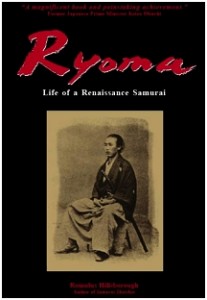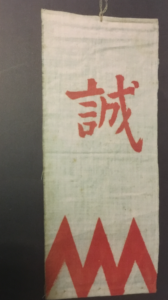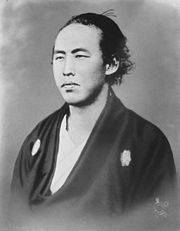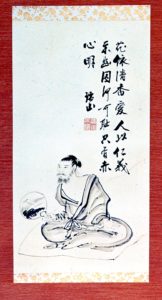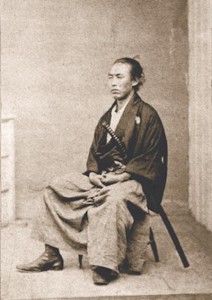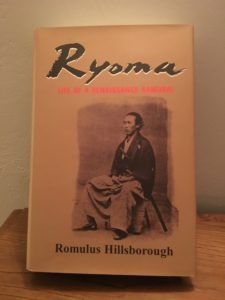
This year is the 20th anniversary of the publication of my book Ryoma: Life of a Renaissance Samurai. So how did I get the idea of writing it? Years ago while I was reading Yoshikawa Eiji’s biographical novel “Musashi,” a friend of mine saw it. “Musashi’s interesting,” he said. “But this is even better.” He handed me the first paperback volume of an 8-volume biographical novel entitled Ryoma ga Yuku, Shiba Ryotaro’s masterpiece about Sakamoto Ryoma. I took the book, thanked my friend, went home, put it in the bookshelf and there it sat for a couple of years. When I finally picked it up again and started reading it, I couldn’t put it down. Not only had I discovered my (new ) “favorite writer,” but I became acquainted with a samurai of the mid-19th century who changed my life.
At first I thought about translating it into English so that people all over the world could learn about Ryoma and his fascinating story. But translation is a tedious job and I’d done my share of it by then. And besides, since Shiba’s book was written for a Japanese audience, I knew that a straight English translation would never work. When a Japanese writer writes for a Japanese audience he doesn’t have to explain certain cultural, historical and linguistic nuances that are common knowledge or otherwise readily understood. But if Shiba’s book were to be translated into English, the translator would either have to use lots of annotation or take poetic license with the text, neither of which appealed to me. And so I decided to write my own book, and began the six-year process of researching and writing Ryoma, the only biographical novel about the great man in English.
